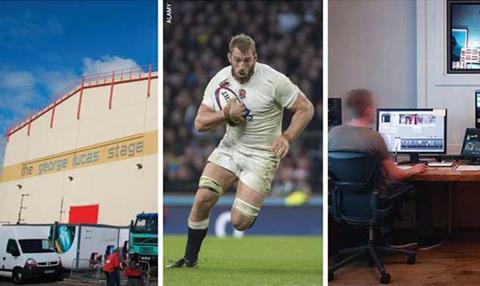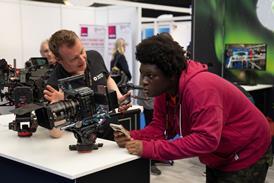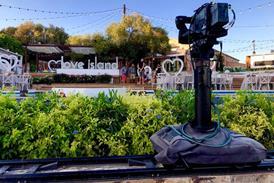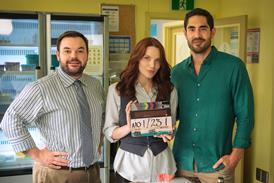Leading figures in post, OB, studios and technology offer their views on what to expect in 2015

ROGER MORRIS
Managing director, Elstree Studios
With the loss of Teddington, Wimbledon and Riverside studios last year, there has been a shortage of space for TV productions, but I think that will ease this year.
Pinewood Shepperton and Leavesden are expanding and facilities in Europe are being more competitive, while the US is doing more to avoid losing work. We have cleared part of the site at Elstree for more studio space and will have something up and running by the end of the year.
We are consulting with TV and fi lm clients to make sure that what we build is fit for purpose.
NICKY SARGENT
Co-chair, The Farm
Unlike studios, post-production won’t ever get to that position of being over-full. Although any Tom, Dick or Harry can open a post facility, the market will always provide enough work for good companies, and I don’t see this year being any different. We can see a pipeline of work as a result of the drama tax breaks but there won’t be a marked difference in volume.
Drama is something the UK does well and with the success of the likes of Broadchurch and Downton Abbey, that won’t diminish. It’s a labour-intensive post process but there is the right match in terms of requirement and capacity.
The public are continuing to enjoy fixed-rig shows, which is good for facilities because they require a distinct set of skills. And it’s not an Olympic or World Cup year, which always helps post-production.
BARRY JOHNSTONE
Managing director, CTV
It’s an uneven year but I don’t think the difference between 2014 and 2015 will be as dramatic for outside broadcast providers as that between 2012 and 2013. The Rugby World Cup, which takes place in September and October, is the biggest sporting event in the UK this year. The venues will be shared among OB firms and CTV will have around a third of them.
Although the industry is a long way from broadcasting in 4K, the different elements, such as specialist cameras, are creeping in. The next block of cameras we buy will be 4K capable – we’re not far from making a purchase but we need to make sure that what we buy today will still be current in 12 months’ time. The cameras we looked at 18 months ago would not be what we put in our trucks today.
SIMON CRADDOCK
Chief executive, Onsight
The demand for kit for shooting 4K has been there for some time but in 2014 we saw a rise in demand for 4K post and it will grow again this year. As with the move to high-definition, sport, natural history and music are the genres driving it.
That will broaden, but the better picture quality means there is more attention on things like make-up and set design, which can mean an increase in production costs. The likes of Netflix are making 4K content and now these services are increasingly available via IPTV, it will mark more progress in the evolution of 4K.
DUNCAN PAYNE
Sales manager, WTS
Lots of content is acquired at 4K but that’s the easy bit. Live sport is still tricky because there needs to be a better way of moving a signal around. A natural progression is to transfer baseband video into IP, and that will be a big move this year, with continuing convergence between broadcast vendors and IT companies like Cisco and Microsoft.
In terms of kit, I expect sales of the Sony FS7 to continue to grow. It’s popular with those who are in control of their own workflow and its price means users can buy instead of rent. The Canon C300 has been popular in the rental market for a few years but a replacement is due and I expect Canon to respond to the FS7 at NAB in April.
PETER WHITE
Chief executive, IABM
Even though top-line growth has been good for vendors, they are peddling hard to maintain profit growth and pressure on selling prices will continue.
In 2015, we will see a shift by those broadcasters still operating a standards-centric, hardware-focused environment to a viewer-centric, software-defined environment. The speed of transition will need to be fast because they have to be able to deliver content across platforms and can only maintain legacy architecture for so long.




























No comments yet